
By Katie Arnold
I’d been in Olympic National Park for less than 24 hours when I felt it coming on. A cloud bank the color of freshly poured concrete had parked itself off the Pacific coast, and to the east the Olympic range was walled off in gray. Even though it was midday, the sky was only slightly lighter than it had been at dusk the night before. My mood was just as sunny. It was official: I had a bad case of climate shock. I live in eternally parched Santa Fe, N.M., and Olympic is one of the soggiest spots in the country. You couldn’t design two more dissimilar ecosystems if you tried. Covering nearly a million acres on the Olympic Peninsula, across Puget Sound from Seattle, the park is home to some of the lower 48’s finest examples of primeval temperate rain forests—the Hoh, Queets, and Quinault—which receive more rain in a year (135 inches on average) than my town gets in eight. I get gloomy after a day of drizzle, and long ago I wrote off rainy places as good for only one thing: They can make even a lizard’s skin look dewy.
Then I noticed the moss.
The road into the Hoh Rain Forest, wedged into a narrow valley on the peninsula’s west coast, follows the milky Hoh River, whose waters flow from several glaciers atop 7,980-foot Mount Olympus. On a clear day, of which there are actually many during the summer, the icy peaks glitter white in the sunshine. But down in the valley, moss rules. It carpets the pavement, a thin film of fuzzy electric green. It blankets street signs, squats like a top hat on a phone booth, migrates across shingled roofs, and drapes itself over practically every surface of every tree, living or long dead. Sit still for too long, I feared, and I’d be next.
I wandered the Hall of Mosses, a three-quarter-mile hiking trail beneath Sitka spruces and red cedars so woolly with moss they looked like giant pipe cleaners. It hadn’t rained for several days, but the humidity was so high that fat drops of dew dripped from fern fronds and the pine needle carpet underfoot was wet as a sponge. Towering Douglas firs crowded up against hemlocks whose trunks were easily 20 feet around, and every inch of real estate on the ground was spoken for: Stumps blossomed with toadstools, and tiny bunchberry dogwoods rubbed elbows with licorice ferns. The sky was nowhere in sight, veiled by a canopy of green. Despite my claustrophobic haze, I couldn’t help but appreciate the lush life springing up around me. Clearly plenty of life-forms thrive here—some 300 birds, 50 mammals, and 1,200 plants, including 24 species found only in the park—even if I’m not one of them.
I tried to meditate on the ancient giants that rose above me and on the deer foraging beside the trail, oblivious to my approach. I was sure the trees were trying to impart some essential life lessons: Soggy weather can do more than soften your face. When life gives you rain, make toadstools. Then again, maybe all this moisture was short-circuiting my brain. I needed to breathe.
Fortunately for me, rain forests don’t exist in a vacuum. They need just the right mix of meteorology and topography: wet marine air storming in off the ocean and a mountain range high enough to trap the moisture in narrow, low-lying valleys. Exploring the park’s undeveloped Pacific shoreline, I reasoned, was essential to appreciating its trees. Besides, I’d heard they have sky there.
The park has some 73 miles of beaches, many of which are accessible only at low tide. According to the tide chart, my timing was perfect to wander the Kalaloch coast, a long stretch of empty shoreline about 38 miles southwest of the Hoh Rain Forest. I arrived to find an ample expanse of graphite gray sand, fine and pebbly in places and scattered with tide-polished cobbles in others. The clouds had thinned just enough to reveal an eerie glowing orb that looked vaguely familiar. Ah, yes, the sun. I took a deep gulp of salt air. I felt better already.
The sand was littered with logs, the bones of huge old trees swept downriver from the rain forest during storms and left to lie where they washed up, slippery from the sea. Jumbled together like a pile of mammoth matchsticks, the trunks formed a sort of horizontal jungle—dead but somehow still dynamic. Pacific rain nurtured these giants and would someday carry them down to the coast; in a hundred years, they’d be swept back into the sea and the cycle would start again. Sufficiently awed, I climbed up on the broad back of a log and ate my picnic lunch as set after set of Pacific rollers pounded the shore. The world felt big and right again.
Restored by my afternoon at the beach, I decided to brave another rain forest. I still had more to learn about this alien place. The Queets Rain Forest is on a sliver of parkland reached by a narrow washboard dirt road. At first I was content to experience the surroundings from the snug confines of my car, but then the road ended and my curiosity got the better of me. If I wanted to see more, I would have to get wet. Outside I noticed two dark, hulking shapes high in a tree along the river—palatial birds’ nests or a pair of bald eagles, I couldn’t tell which—and the next thing I knew I was picking my way to the river through a maze of mossy logs and thigh-deep brush. The black blobs were eagles that took off as I thrashed closer, leaving behind the dead salmon that lay on the cobbles at my feet, its pinky innards half eaten and one gleaming fish eye staring up at me. I stood there, soaked but strangely exhilarated, wondering how long I’d have to wait until the raptors returned for their dinner. For the first time, I was too absorbed in the scene to think about how much I missed the sun and the sky. Maybe I was starting to understand the rain forest after all.
There was a way to find out. I drove south to the Quinault Rain Forest, a long finger of old-growth stands that straddles the Quinault River. The valley is famous for its colossal trees—hemlock, cedar, Douglas first, and the country’s largest Sitka spruce—and for its Roosevelt elk. The elk are named for Teddy Roosevelt, who protected the animals’ habitat in 1909 by creating Mount Olympus National Monument. (FDR designated it a national park in 1938.) Some 3,000 to 5,000 Roosevelt elk live in Olympic National Park—the world’s largest population still in its natural environment—and the upper Quinault Valley is a prime place for spotting them.
That afternoon I met up with Roger Blain, who protected the local herds as a park ranger before retiring and becoming an interpretive guide. Blain is in his 60s, with a shag of graying hair, a generous mustache, and a gentle, grandfatherly reserve that turned to giddy wonder when we came across our first herd of the day, rustling in the bushes along Graves Creek.
I’d seen elk from afar in the Queets, shadowy figures lurching through the mist, but these were no more than 20 feet away, a dozen cows with knobby Bullwinkle faces and tawny rumps camouflaged by the foliage. They were in rut, Blain explained, which meant the herd’s one bull was working overtime, rain or shine. Blain must have witnessed this sight countless times, but he was as rapt as I. We sat in silence, watching them pick and snort at the ground as though we weren’t even there. Like the elk, Blain had found his natural habitat.
It was nearly dark, and the heavy mist was peeling back off the high peaks. "Let’s just duck in here, " Blain said. "I’ll show you my secret tree." We pulled over and walked a hundred yards into the woods, and there it was: an enormous big-leaf maple open above us like an umbrella, its branches coated in silvery green moss. "Probably 250 years old, " Blain marveled.
I’d seen so many big trees over the past few days that I might have been blasé, but Blain was right: This one was different. I stood as close as I could to its trunk and peered up through its branches, not seeing the tree as much as sensing it. Shimmering in the humid air, it seemed to come to life—a giant, twisting octopus swaying its mossy arms in the breeze. "I’ve watched elk bed down in here, " Blain said after a while, smiling at the memory. "It feels like the Garden of Eden. " At last, I was beginning to see what he meant.
If you're going . . .
Get the Northwestern CampBook and the Oregon & Washington TourBook guide and map. Olympic National Park is about three hours west of Seattle by Highway 101. The park’s main visitor center, located in Port Angeles, makes a good first stop to pick up an entry pass ($15 per vehicle), maps, and information: (360) 565-3130, www.nps.gov/olym.
WHEN TO VISITSummer is high season, typically with clear skies and temperatures in the 70s at low elevations. The winter storm season starts in late September. Call the park’s information line for driving conditions: (360) 565-3131. Late spring and early fall offer mild temperatures and fewer people.
SLEEPSKalaloch Lodge From $118. (888) 896-3826, http://www.visitkalaloch.com/. Lake Crescent Lodge From $68. (360) 928-3211, lakecrescentlodge.com. Lake Quinault Lodge From $130. (800) 562-6672, http://www.visitlakequinault.com/. Sol Duc Hot Springs Resort From $127. Opens March 29. (888) 896-3828, http://www.visitsolduc.com/. Spots at Olympic’s 16 campgrounds ($10–$18 per night) are available on a first-come, first-served basis, except for the 170 sites at Kalaloch campground, which you can book for peak season at http://www.recreation.gov/.
EATSHard Rain Cafe 5763 Upper Hoh Rd., Forks, (360) 374-9288. Kalaloch Lodge, Lake Quinault Lodge, and Sol Duc Hot Springs Resort also have restaurants.
TO DO AND SEEA park brochure details more than 30 easy to moderate day hikes. Roger Blain leads hikes (free) and car tours ($150 for up to five people), and can set up guided fishing trips at Lake Quinault Lodge. Starting on Memorial Day, the lodge offers boat tours (from $25) and boat, canoe, and kayak rentals. Rainforest Paddlers runs raft trips on the Hoh River. (866) 457-8398, http://www.rainforestpaddlers.com/.
I’d been in Olympic National Park for less than 24 hours when I felt it coming on. A cloud bank the color of freshly poured concrete had parked itself off the Pacific coast, and to the east the Olympic range was walled off in gray. Even though it was midday, the sky was only slightly lighter than it had been at dusk the night before. My mood was just as sunny. It was official: I had a bad case of climate shock. I live in eternally parched Santa Fe, N.M., and Olympic is one of the soggiest spots in the country. You couldn’t design two more dissimilar ecosystems if you tried. Covering nearly a million acres on the Olympic Peninsula, across Puget Sound from Seattle, the park is home to some of the lower 48’s finest examples of primeval temperate rain forests—the Hoh, Queets, and Quinault—which receive more rain in a year (135 inches on average) than my town gets in eight. I get gloomy after a day of drizzle, and long ago I wrote off rainy places as good for only one thing: They can make even a lizard’s skin look dewy.
Then I noticed the moss.
The road into the Hoh Rain Forest, wedged into a narrow valley on the peninsula’s west coast, follows the milky Hoh River, whose waters flow from several glaciers atop 7,980-foot Mount Olympus. On a clear day, of which there are actually many during the summer, the icy peaks glitter white in the sunshine. But down in the valley, moss rules. It carpets the pavement, a thin film of fuzzy electric green. It blankets street signs, squats like a top hat on a phone booth, migrates across shingled roofs, and drapes itself over practically every surface of every tree, living or long dead. Sit still for too long, I feared, and I’d be next.
I wandered the Hall of Mosses, a three-quarter-mile hiking trail beneath Sitka spruces and red cedars so woolly with moss they looked like giant pipe cleaners. It hadn’t rained for several days, but the humidity was so high that fat drops of dew dripped from fern fronds and the pine needle carpet underfoot was wet as a sponge. Towering Douglas firs crowded up against hemlocks whose trunks were easily 20 feet around, and every inch of real estate on the ground was spoken for: Stumps blossomed with toadstools, and tiny bunchberry dogwoods rubbed elbows with licorice ferns. The sky was nowhere in sight, veiled by a canopy of green. Despite my claustrophobic haze, I couldn’t help but appreciate the lush life springing up around me. Clearly plenty of life-forms thrive here—some 300 birds, 50 mammals, and 1,200 plants, including 24 species found only in the park—even if I’m not one of them.
I tried to meditate on the ancient giants that rose above me and on the deer foraging beside the trail, oblivious to my approach. I was sure the trees were trying to impart some essential life lessons: Soggy weather can do more than soften your face. When life gives you rain, make toadstools. Then again, maybe all this moisture was short-circuiting my brain. I needed to breathe.
Fortunately for me, rain forests don’t exist in a vacuum. They need just the right mix of meteorology and topography: wet marine air storming in off the ocean and a mountain range high enough to trap the moisture in narrow, low-lying valleys. Exploring the park’s undeveloped Pacific shoreline, I reasoned, was essential to appreciating its trees. Besides, I’d heard they have sky there.
The park has some 73 miles of beaches, many of which are accessible only at low tide. According to the tide chart, my timing was perfect to wander the Kalaloch coast, a long stretch of empty shoreline about 38 miles southwest of the Hoh Rain Forest. I arrived to find an ample expanse of graphite gray sand, fine and pebbly in places and scattered with tide-polished cobbles in others. The clouds had thinned just enough to reveal an eerie glowing orb that looked vaguely familiar. Ah, yes, the sun. I took a deep gulp of salt air. I felt better already.
The sand was littered with logs, the bones of huge old trees swept downriver from the rain forest during storms and left to lie where they washed up, slippery from the sea. Jumbled together like a pile of mammoth matchsticks, the trunks formed a sort of horizontal jungle—dead but somehow still dynamic. Pacific rain nurtured these giants and would someday carry them down to the coast; in a hundred years, they’d be swept back into the sea and the cycle would start again. Sufficiently awed, I climbed up on the broad back of a log and ate my picnic lunch as set after set of Pacific rollers pounded the shore. The world felt big and right again.
Restored by my afternoon at the beach, I decided to brave another rain forest. I still had more to learn about this alien place. The Queets Rain Forest is on a sliver of parkland reached by a narrow washboard dirt road. At first I was content to experience the surroundings from the snug confines of my car, but then the road ended and my curiosity got the better of me. If I wanted to see more, I would have to get wet. Outside I noticed two dark, hulking shapes high in a tree along the river—palatial birds’ nests or a pair of bald eagles, I couldn’t tell which—and the next thing I knew I was picking my way to the river through a maze of mossy logs and thigh-deep brush. The black blobs were eagles that took off as I thrashed closer, leaving behind the dead salmon that lay on the cobbles at my feet, its pinky innards half eaten and one gleaming fish eye staring up at me. I stood there, soaked but strangely exhilarated, wondering how long I’d have to wait until the raptors returned for their dinner. For the first time, I was too absorbed in the scene to think about how much I missed the sun and the sky. Maybe I was starting to understand the rain forest after all.
There was a way to find out. I drove south to the Quinault Rain Forest, a long finger of old-growth stands that straddles the Quinault River. The valley is famous for its colossal trees—hemlock, cedar, Douglas first, and the country’s largest Sitka spruce—and for its Roosevelt elk. The elk are named for Teddy Roosevelt, who protected the animals’ habitat in 1909 by creating Mount Olympus National Monument. (FDR designated it a national park in 1938.) Some 3,000 to 5,000 Roosevelt elk live in Olympic National Park—the world’s largest population still in its natural environment—and the upper Quinault Valley is a prime place for spotting them.
That afternoon I met up with Roger Blain, who protected the local herds as a park ranger before retiring and becoming an interpretive guide. Blain is in his 60s, with a shag of graying hair, a generous mustache, and a gentle, grandfatherly reserve that turned to giddy wonder when we came across our first herd of the day, rustling in the bushes along Graves Creek.
I’d seen elk from afar in the Queets, shadowy figures lurching through the mist, but these were no more than 20 feet away, a dozen cows with knobby Bullwinkle faces and tawny rumps camouflaged by the foliage. They were in rut, Blain explained, which meant the herd’s one bull was working overtime, rain or shine. Blain must have witnessed this sight countless times, but he was as rapt as I. We sat in silence, watching them pick and snort at the ground as though we weren’t even there. Like the elk, Blain had found his natural habitat.
It was nearly dark, and the heavy mist was peeling back off the high peaks. "Let’s just duck in here, " Blain said. "I’ll show you my secret tree." We pulled over and walked a hundred yards into the woods, and there it was: an enormous big-leaf maple open above us like an umbrella, its branches coated in silvery green moss. "Probably 250 years old, " Blain marveled.
I’d seen so many big trees over the past few days that I might have been blasé, but Blain was right: This one was different. I stood as close as I could to its trunk and peered up through its branches, not seeing the tree as much as sensing it. Shimmering in the humid air, it seemed to come to life—a giant, twisting octopus swaying its mossy arms in the breeze. "I’ve watched elk bed down in here, " Blain said after a while, smiling at the memory. "It feels like the Garden of Eden. " At last, I was beginning to see what he meant.
If you're going . . .
Get the Northwestern CampBook and the Oregon & Washington TourBook guide and map. Olympic National Park is about three hours west of Seattle by Highway 101. The park’s main visitor center, located in Port Angeles, makes a good first stop to pick up an entry pass ($15 per vehicle), maps, and information: (360) 565-3130, www.nps.gov/olym.
WHEN TO VISITSummer is high season, typically with clear skies and temperatures in the 70s at low elevations. The winter storm season starts in late September. Call the park’s information line for driving conditions: (360) 565-3131. Late spring and early fall offer mild temperatures and fewer people.
SLEEPSKalaloch Lodge From $118. (888) 896-3826, http://www.visitkalaloch.com/. Lake Crescent Lodge From $68. (360) 928-3211, lakecrescentlodge.com. Lake Quinault Lodge From $130. (800) 562-6672, http://www.visitlakequinault.com/. Sol Duc Hot Springs Resort From $127. Opens March 29. (888) 896-3828, http://www.visitsolduc.com/. Spots at Olympic’s 16 campgrounds ($10–$18 per night) are available on a first-come, first-served basis, except for the 170 sites at Kalaloch campground, which you can book for peak season at http://www.recreation.gov/.
EATSHard Rain Cafe 5763 Upper Hoh Rd., Forks, (360) 374-9288. Kalaloch Lodge, Lake Quinault Lodge, and Sol Duc Hot Springs Resort also have restaurants.
TO DO AND SEEA park brochure details more than 30 easy to moderate day hikes. Roger Blain leads hikes (free) and car tours ($150 for up to five people), and can set up guided fishing trips at Lake Quinault Lodge. Starting on Memorial Day, the lodge offers boat tours (from $25) and boat, canoe, and kayak rentals. Rainforest Paddlers runs raft trips on the Hoh River. (866) 457-8398, http://www.rainforestpaddlers.com/.




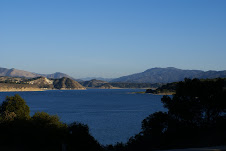

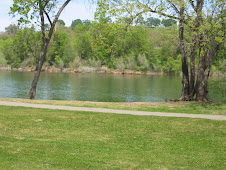




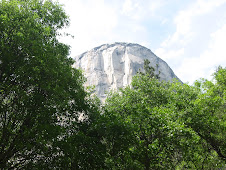

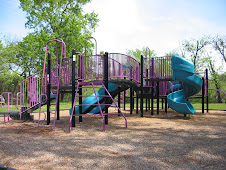
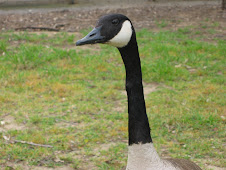

No comments:
Post a Comment